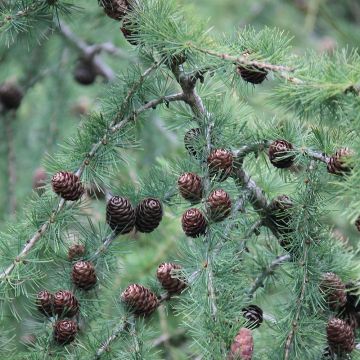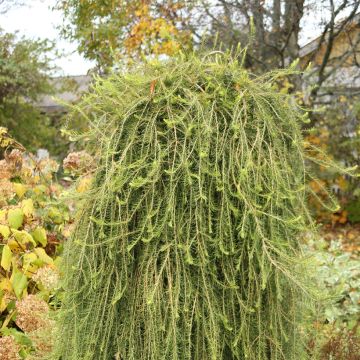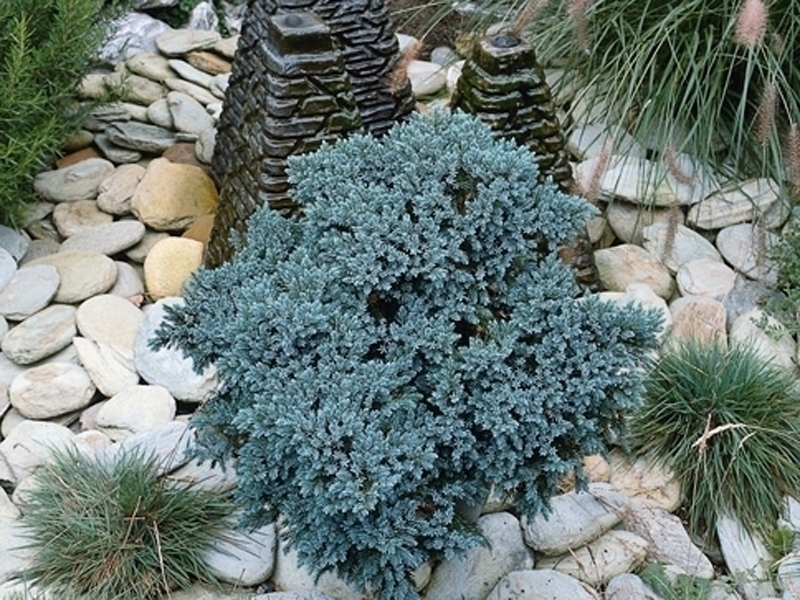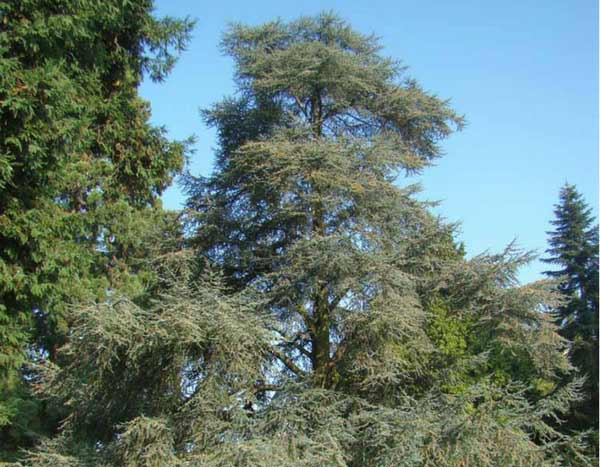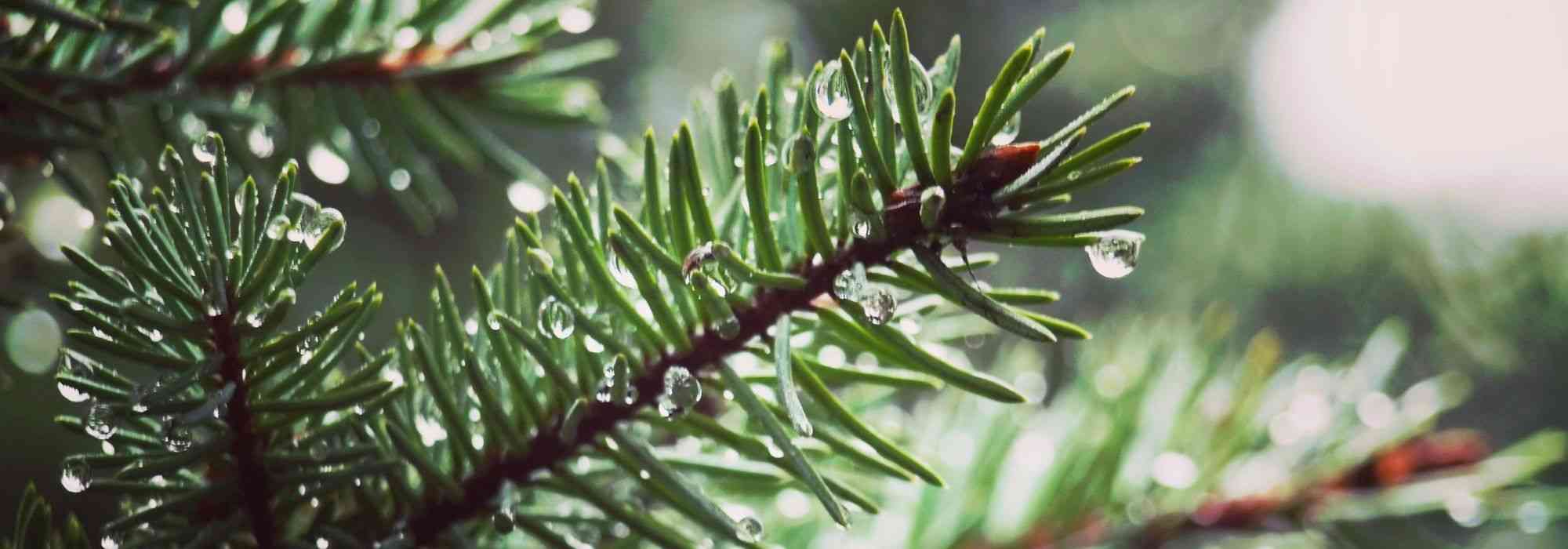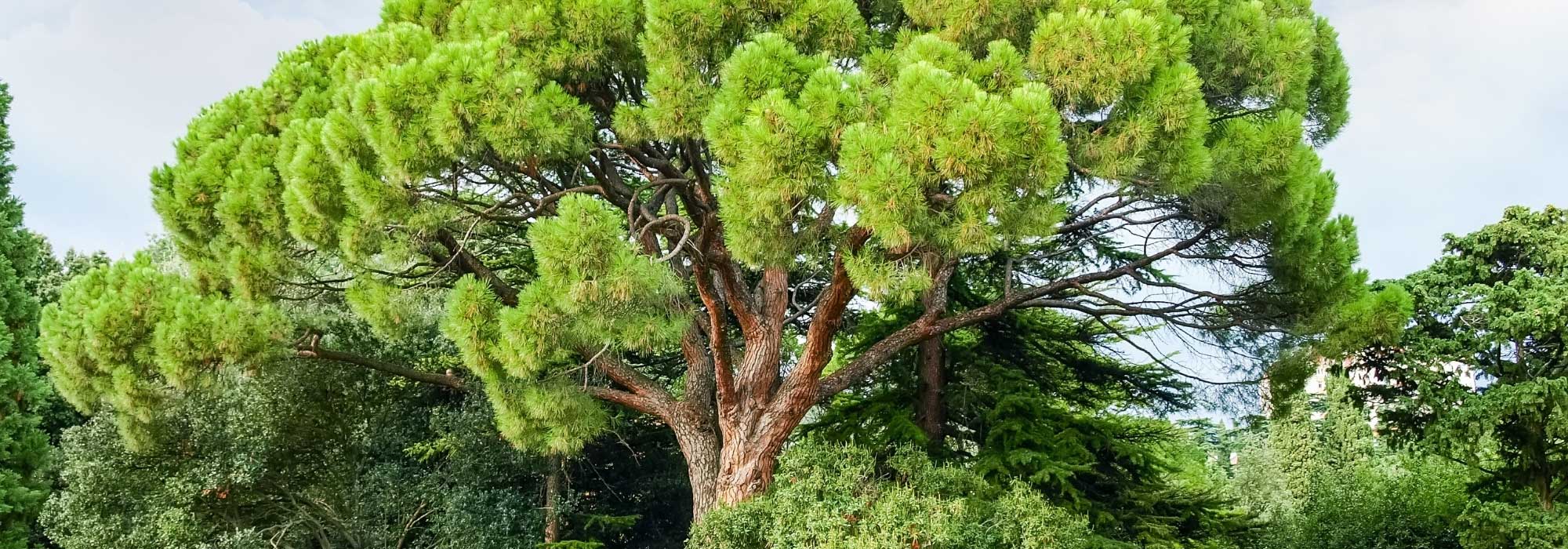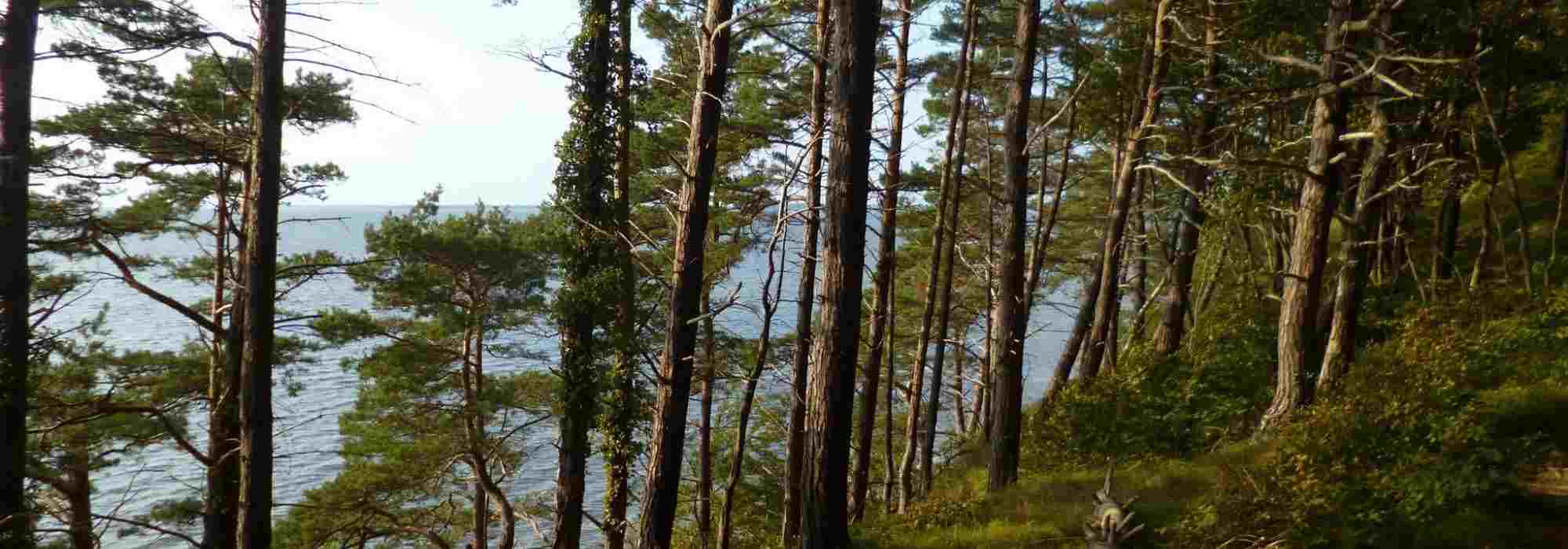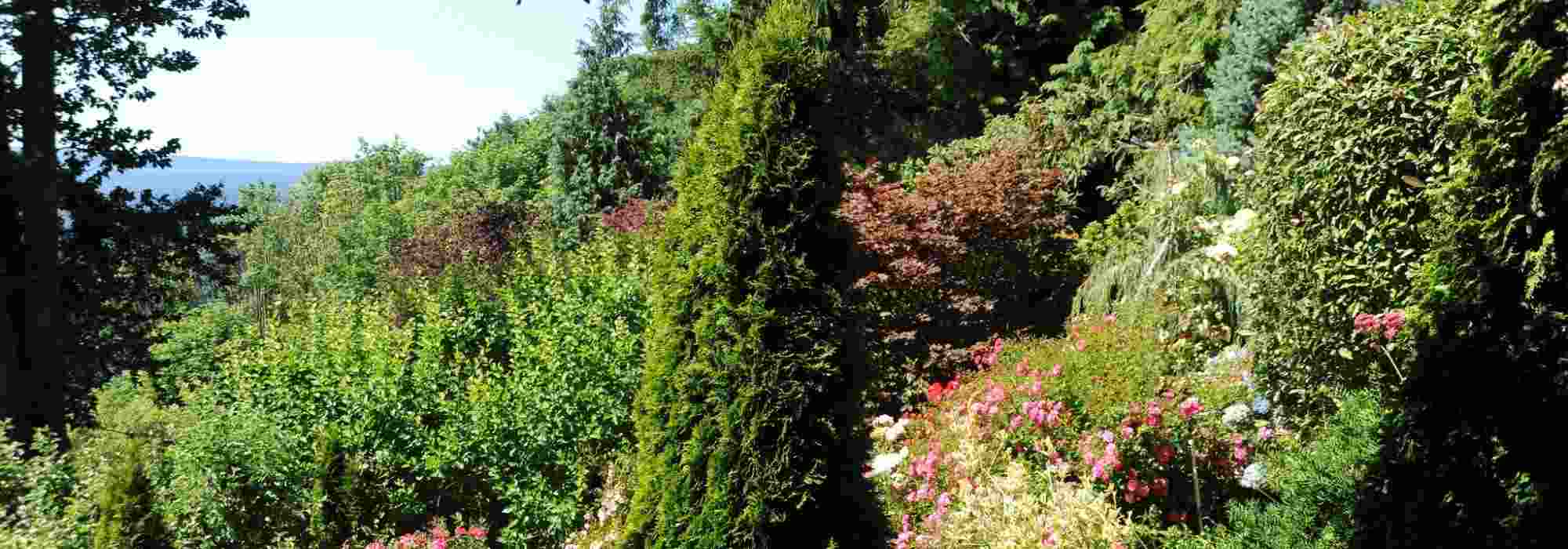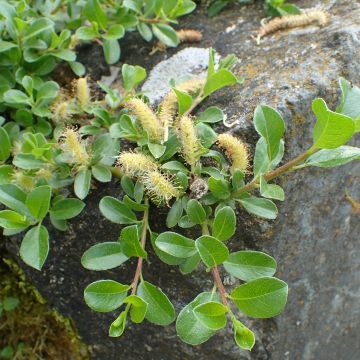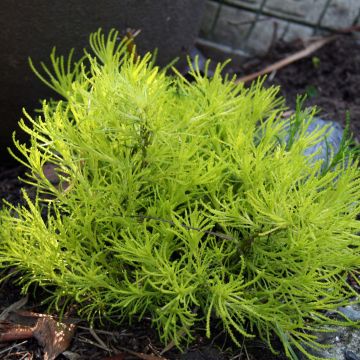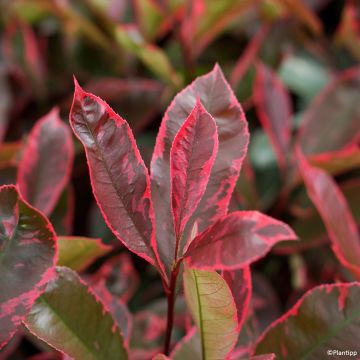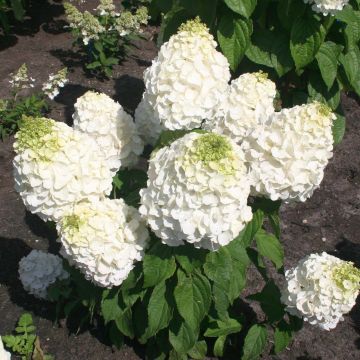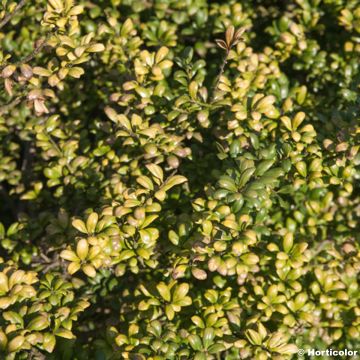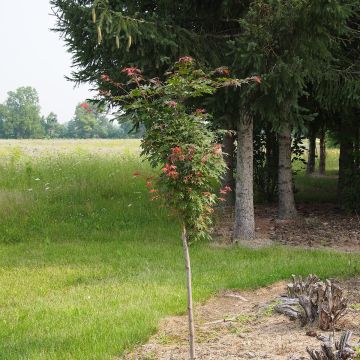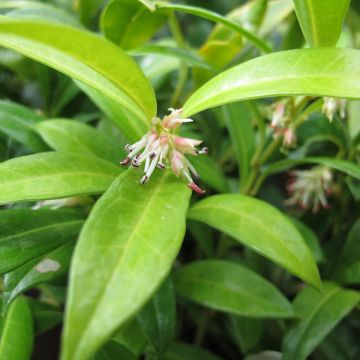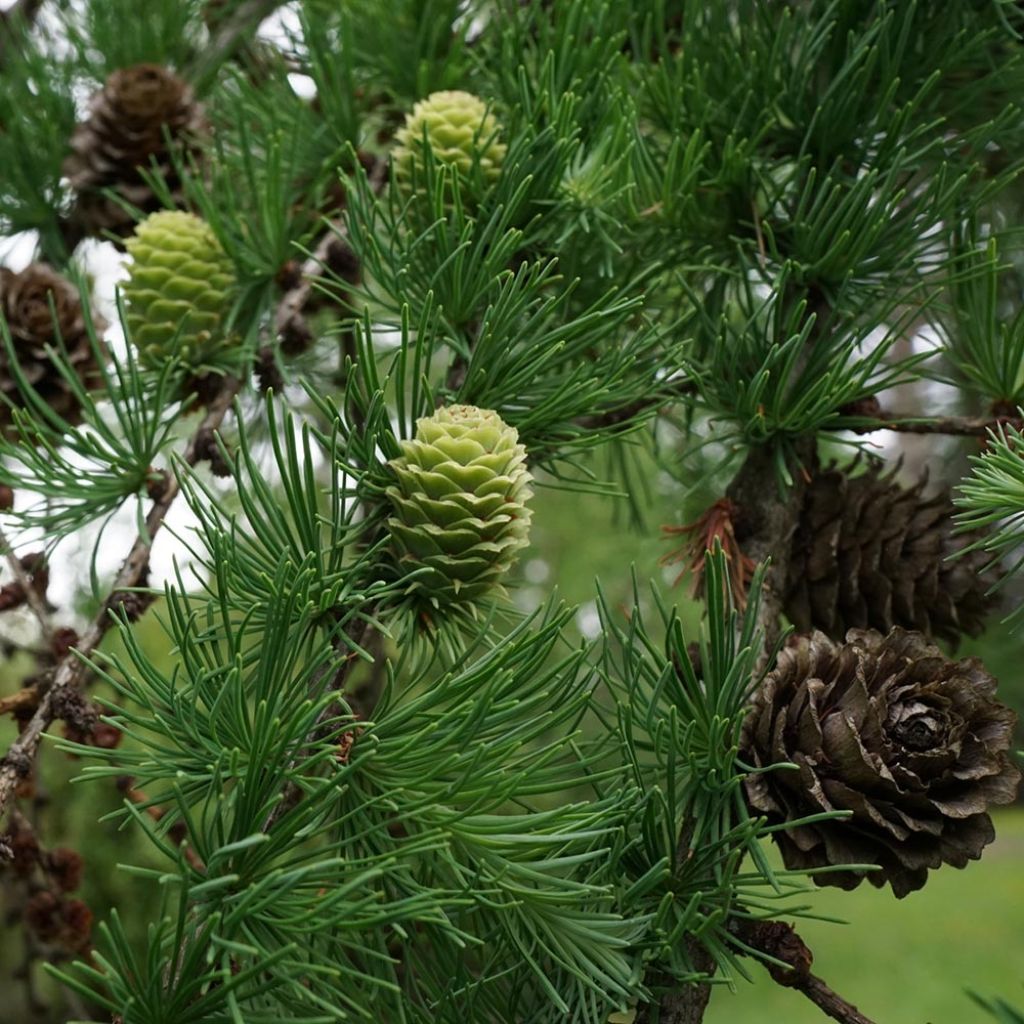

Larix kaempferi - Mélèze du Japon
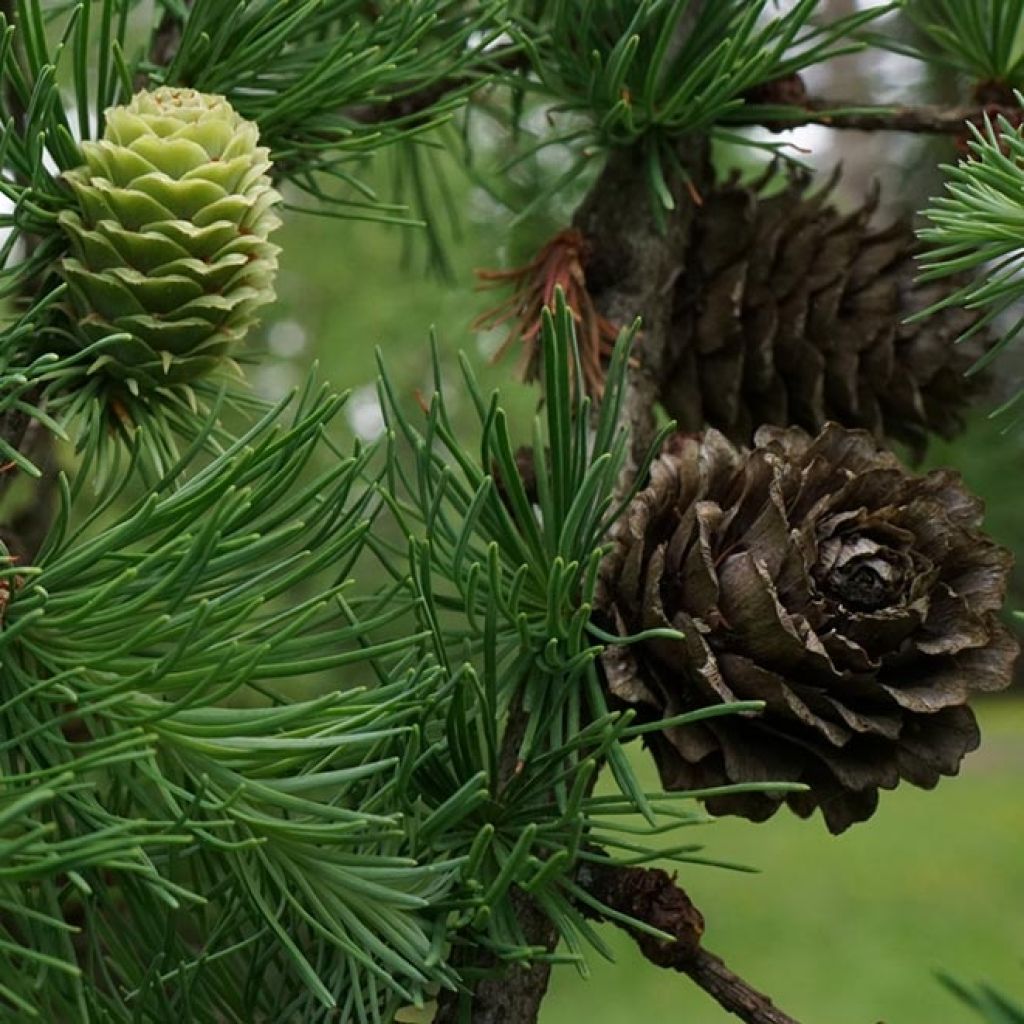

Larix kaempferi - Mélèze du Japon
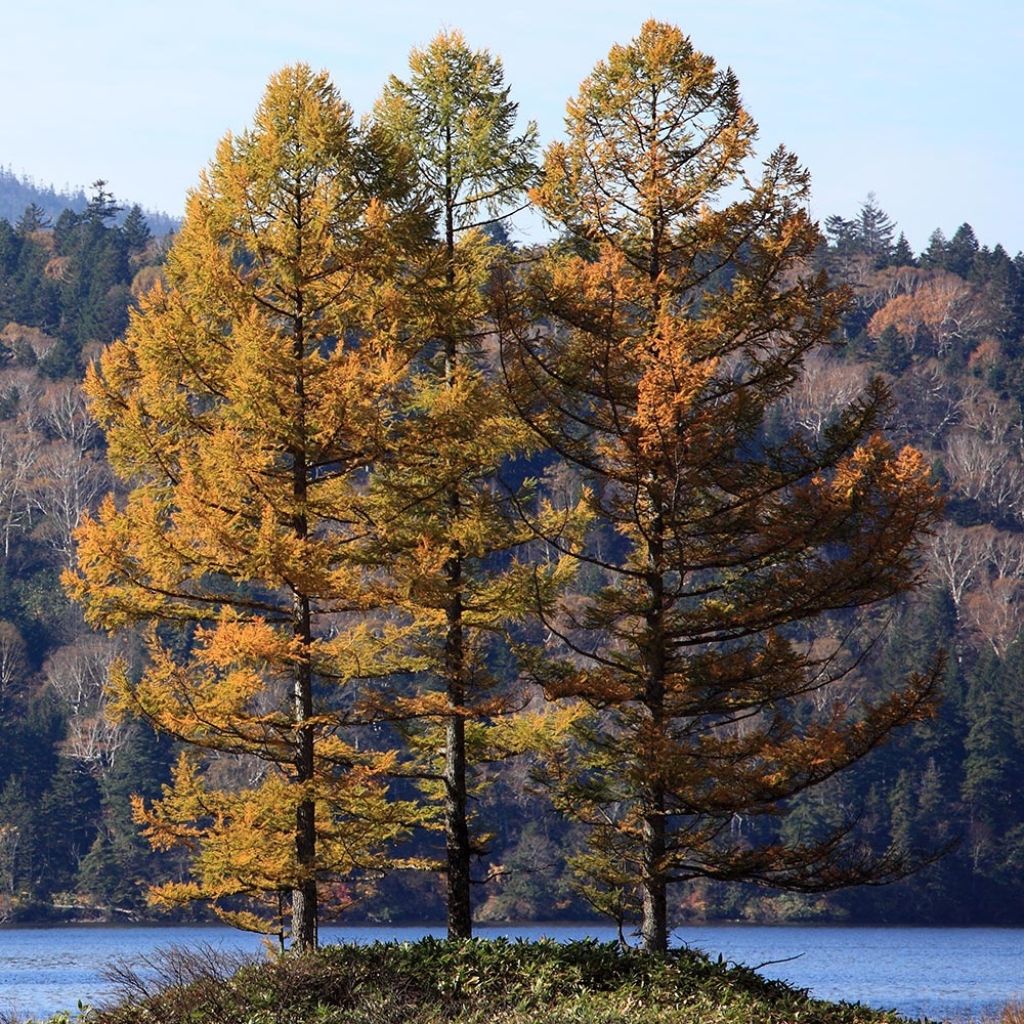

Larix kaempferi - Mélèze du Japon
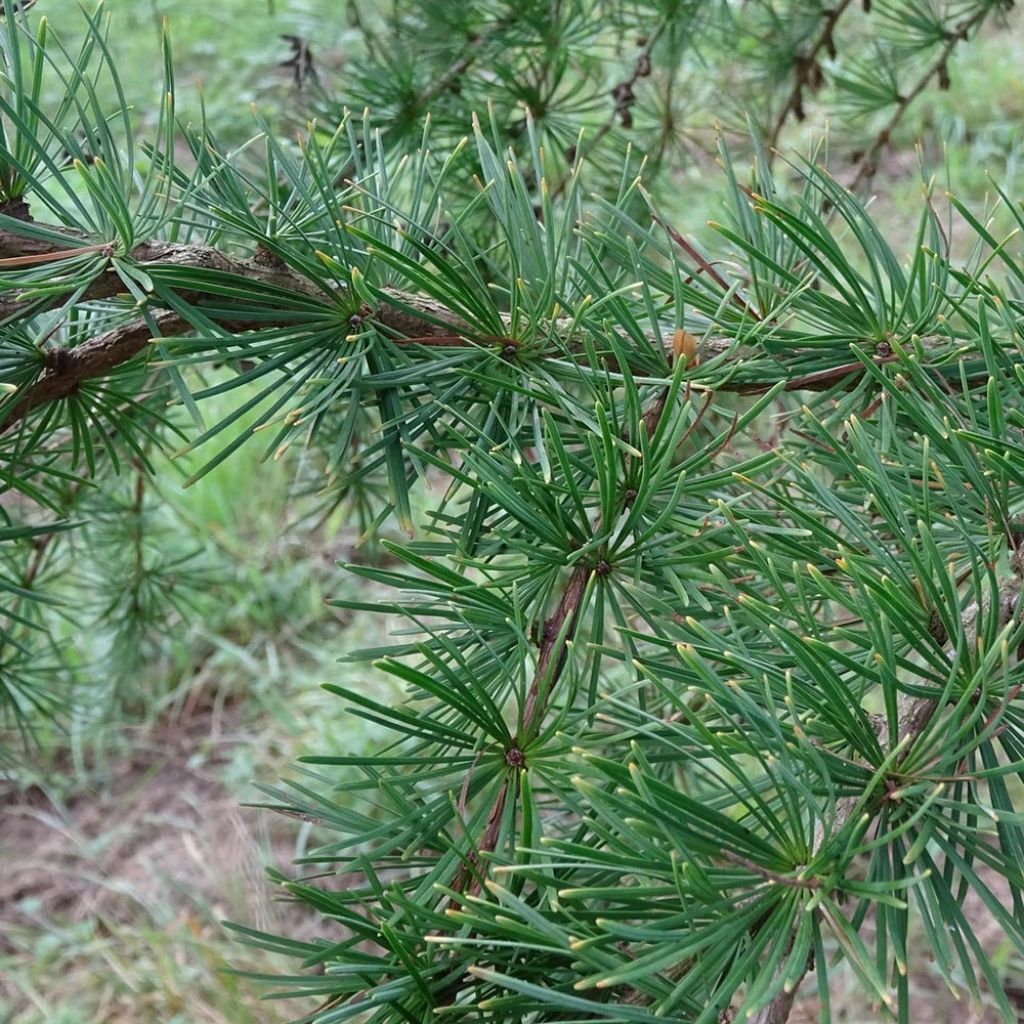

Larix kaempferi - Mélèze du Japon
Larix kaempferi - Larch
Larix kaempferi
Japanese Larch, Kaempfer's Larch
Small but regenerates very well in spring, charming tender green buds on rather dark wood.
Elisabeth, 17/03/2022
Special offer!
Receive a €20 voucher for any order over €90 (excluding delivery costs, credit notes, and plastic-free options)!
1- Add your favorite plants to your cart.
2- Once you have reached €90, confirm your order (you can even choose the delivery date!).
3- As soon as your order is shipped, you will receive an email containing your voucher code, valid for 3 months (90 days).
Your voucher is unique and can only be used once, for any order with a minimum value of €20, excluding delivery costs.
Can be combined with other current offers, non-divisible and non-refundable.
Home or relay delivery (depending on size and destination)
Schedule delivery date,
and select date in basket
This plant carries a 24 months recovery warranty
More information
We guarantee the quality of our plants for a full growing cycle, and will replace at our expense any plant that fails to recover under normal climatic and planting conditions.

Would this plant suit my garden?
Set up your Plantfit profile →
Description
The Larix kaempferi, also known as the Japanese larch, is a deciduous conifer of beautiful stature that should be reserved for large gardens and our cool and moist regions. With an elegant silhouette and a harmonious, airy, conical habit, it bears bluish-green needles from spring to summer and turns a yellowish-bronze to orange colour in autumn that catches everyone's attention. Very hardy, it appreciates a light, neutral to acidic, moist soil and a sunny exposure.
The Japanese larch, Larix kaempferi, also known as Larix leptolepis, is a large Japanese conifer with a conical habit that can reach a height of 30m (98ft) and a spread of 10m (33ft), and is characterized by its deciduous foliage, absent in winter. It is native to the mountains of the Hondo Island, where it grows at an altitude between 1,300 and 2,900m (4 and 9ft), but it adapts very well to plain cultivation in a rather cool oceanic climate. It belongs to the pinaceae family, like pines, firs, and spruces. It is visually very similar to the European deciduous larch, but grows faster.
The growth of this larch is quite slow during the first 3 years after its installation, and then it accelerates. Its long and strong, sparse branches emerge from the trunk at a slightly open angle, slightly pointing upwards. Its bark is thin and brownish-orange in colour. From spring to summer, the foliage is generally bluish-green, composed of flat needles measuring 1.5 to 4cm (1 to 2in), which are flexible and non-prickly. These needles are solitary on long shoots, but densely arranged in rosettes on short shoots. Like all other larches, this one takes on a magnificent colour in autumn, here a yellowish-brown with orange reflections. Flowering occurs in March-April. The tree bears separate male and female flowers, which are not very visible. Pollination is ensured by the wind. Fertilised female flowers transform into small globose cones, in the shape of a rosette, measuring 2 to 3cm (1in) in length.
The Japanese larch is a magnificent conifer that can be adopted in a park or a very large garden, in a well-exposed location. It has its place in a Japanese-style setting. Its cultivation requirements will be satisfied in regions that can offer it both non-calcareous and well-draining soil, as well as sufficient rainfall. It can also be a delightful bonsai. The graphic qualities of conifers naturally impose themselves in the design of a contemporary garden, which favours shapes, silhouettes, and textures over the dance of foliage and flowering.
Tips: Water regularly during the first two years, and in drought in summer.
Larix kaempferi - Larch in pictures
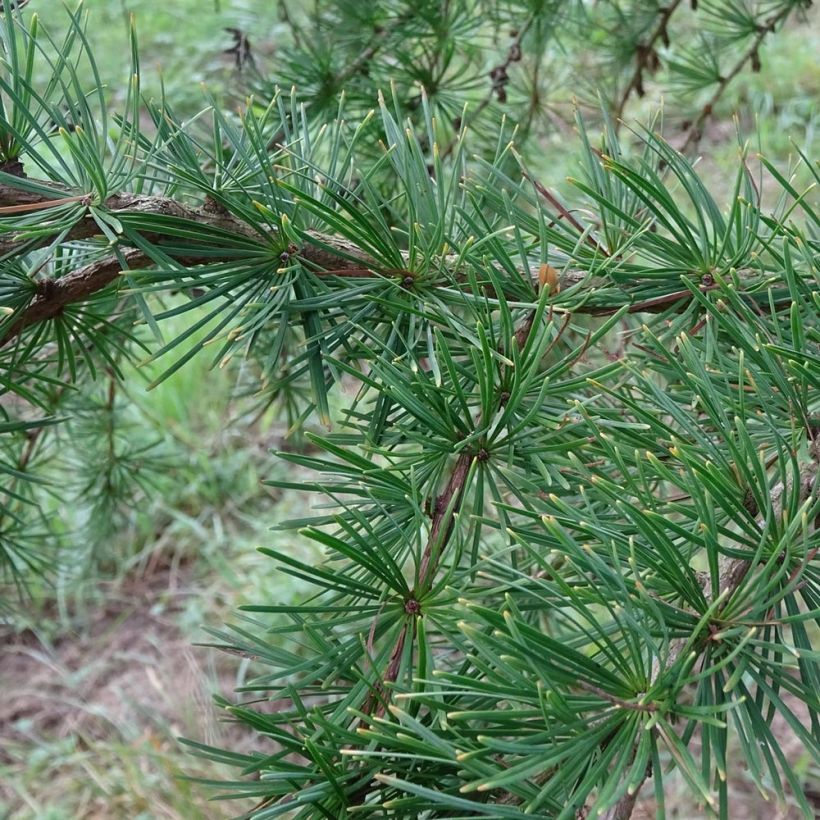



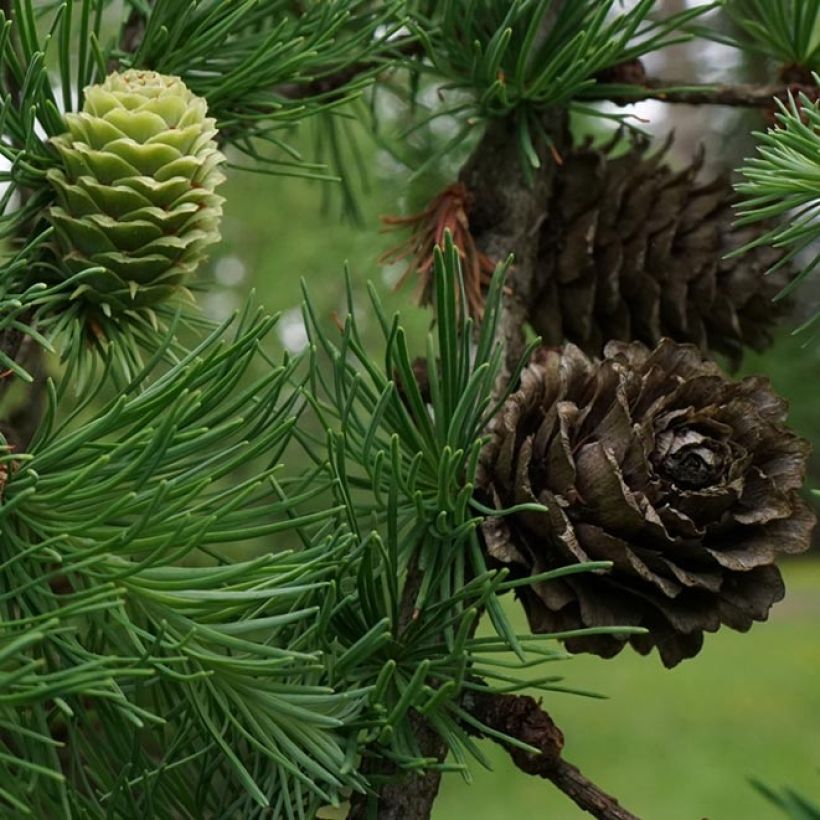

Plant habit
Flowering
Foliage
Botanical data
Larix
kaempferi
Pinaceae
Japanese Larch, Kaempfer's Larch
Southeast Asia
Other Larix - Larch
View all →Planting and care
The Larix kaempferi is a plant of montane, cool and wet climate that dreads arid situations, heatwaves, and late frost. It is preferably planted from September to November in well-drained but cool, even poor, but non-calcareous soil, in a sunny and open location. A mixture consisting of coarse sand, peaty soil, and potting soil added to non-calcareous garden soil will be very suitable. Water regularly during the first two years, and in case of summer drought. Soak the roots well before planting. This hardy (-20°C (-4°F)) tree however dreads heavy, water-soaked soils. Pruning is not necessary, but if it is essential, it should be done in February-March.
Planting period
Intended location
Care
Planting & care advice
-
, onOrder confirmed
Reply from on Promesse de fleurs
Similar products
Haven't found what you were looking for?
Hardiness is the lowest winter temperature a plant can endure without suffering serious damage or even dying. However, hardiness is affected by location (a sheltered area, such as a patio), protection (winter cover) and soil type (hardiness is improved by well-drained soil).

Photo Sharing Terms & Conditions
In order to encourage gardeners to interact and share their experiences, Promesse de fleurs offers various media enabling content to be uploaded onto its Site - in particular via the ‘Photo sharing’ module.
The User agrees to refrain from:
- Posting any content that is illegal, prejudicial, insulting, racist, inciteful to hatred, revisionist, contrary to public decency, that infringes on privacy or on the privacy rights of third parties, in particular the publicity rights of persons and goods, intellectual property rights, or the right to privacy.
- Submitting content on behalf of a third party;
- Impersonate the identity of a third party and/or publish any personal information about a third party;
In general, the User undertakes to refrain from any unethical behaviour.
All Content (in particular text, comments, files, images, photos, videos, creative works, etc.), which may be subject to property or intellectual property rights, image or other private rights, shall remain the property of the User, subject to the limited rights granted by the terms of the licence granted by Promesse de fleurs as stated below. Users are at liberty to publish or not to publish such Content on the Site, notably via the ‘Photo Sharing’ facility, and accept that this Content shall be made public and freely accessible, notably on the Internet.
Users further acknowledge, undertake to have ,and guarantee that they hold all necessary rights and permissions to publish such material on the Site, in particular with regard to the legislation in force pertaining to any privacy, property, intellectual property, image, or contractual rights, or rights of any other nature. By publishing such Content on the Site, Users acknowledge accepting full liability as publishers of the Content within the meaning of the law, and grant Promesse de fleurs, free of charge, an inclusive, worldwide licence for the said Content for the entire duration of its publication, including all reproduction, representation, up/downloading, displaying, performing, transmission, and storage rights.
Users also grant permission for their name to be linked to the Content and accept that this link may not always be made available.
By engaging in posting material, Users consent to their Content becoming automatically accessible on the Internet, in particular on other sites and/or blogs and/or web pages of the Promesse de fleurs site, including in particular social pages and the Promesse de fleurs catalogue.
Users may secure the removal of entrusted content free of charge by issuing a simple request via our contact form.
The flowering period indicated on our website applies to countries and regions located in USDA zone 8 (France, the United Kingdom, Ireland, the Netherlands, etc.)
It will vary according to where you live:
- In zones 9 to 10 (Italy, Spain, Greece, etc.), flowering will occur about 2 to 4 weeks earlier.
- In zones 6 to 7 (Germany, Poland, Slovenia, and lower mountainous regions), flowering will be delayed by 2 to 3 weeks.
- In zone 5 (Central Europe, Scandinavia), blooming will be delayed by 3 to 5 weeks.
In temperate climates, pruning of spring-flowering shrubs (forsythia, spireas, etc.) should be done just after flowering.
Pruning of summer-flowering shrubs (Indian Lilac, Perovskia, etc.) can be done in winter or spring.
In cold regions as well as with frost-sensitive plants, avoid pruning too early when severe frosts may still occur.
The planting period indicated on our website applies to countries and regions located in USDA zone 8 (France, United Kingdom, Ireland, Netherlands).
It will vary according to where you live:
- In Mediterranean zones (Marseille, Madrid, Milan, etc.), autumn and winter are the best planting periods.
- In continental zones (Strasbourg, Munich, Vienna, etc.), delay planting by 2 to 3 weeks in spring and bring it forward by 2 to 4 weeks in autumn.
- In mountainous regions (the Alps, Pyrenees, Carpathians, etc.), it is best to plant in late spring (May-June) or late summer (August-September).
The harvesting period indicated on our website applies to countries and regions in USDA zone 8 (France, England, Ireland, the Netherlands).
In colder areas (Scandinavia, Poland, Austria...) fruit and vegetable harvests are likely to be delayed by 3-4 weeks.
In warmer areas (Italy, Spain, Greece, etc.), harvesting will probably take place earlier, depending on weather conditions.
The sowing periods indicated on our website apply to countries and regions within USDA Zone 8 (France, UK, Ireland, Netherlands).
In colder areas (Scandinavia, Poland, Austria...), delay any outdoor sowing by 3-4 weeks, or sow under glass.
In warmer climes (Italy, Spain, Greece, etc.), bring outdoor sowing forward by a few weeks.
































